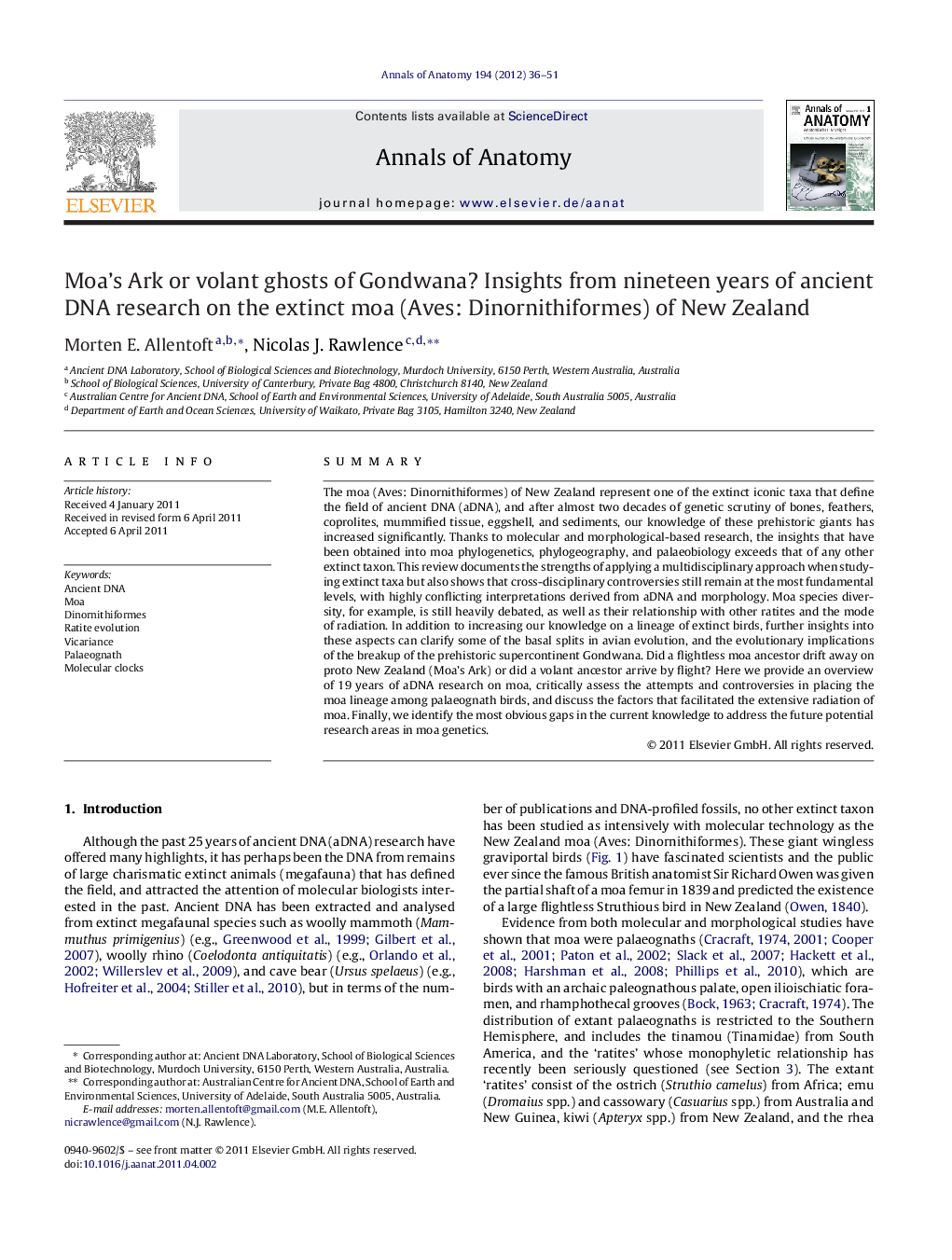| Article ID | Journal | Published Year | Pages | File Type |
|---|---|---|---|---|
| 8461865 | Annals of Anatomy - Anatomischer Anzeiger | 2012 | 16 Pages |
Abstract
The moa (Aves: Dinornithiformes) of New Zealand represent one of the extinct iconic taxa that define the field of ancient DNA (aDNA), and after almost two decades of genetic scrutiny of bones, feathers, coprolites, mummified tissue, eggshell, and sediments, our knowledge of these prehistoric giants has increased significantly. Thanks to molecular and morphological-based research, the insights that have been obtained into moa phylogenetics, phylogeography, and palaeobiology exceeds that of any other extinct taxon. This review documents the strengths of applying a multidisciplinary approach when studying extinct taxa but also shows that cross-disciplinary controversies still remain at the most fundamental levels, with highly conflicting interpretations derived from aDNA and morphology. Moa species diversity, for example, is still heavily debated, as well as their relationship with other ratites and the mode of radiation. In addition to increasing our knowledge on a lineage of extinct birds, further insights into these aspects can clarify some of the basal splits in avian evolution, and the evolutionary implications of the breakup of the prehistoric supercontinent Gondwana. Did a flightless moa ancestor drift away on proto New Zealand (Moa's Ark) or did a volant ancestor arrive by flight? Here we provide an overview of 19 years of aDNA research on moa, critically assess the attempts and controversies in placing the moa lineage among palaeognath birds, and discuss the factors that facilitated the extensive radiation of moa. Finally, we identify the most obvious gaps in the current knowledge to address the future potential research areas in moa genetics.
Related Topics
Life Sciences
Biochemistry, Genetics and Molecular Biology
Cell Biology
Authors
Morten E. Allentoft, Nicolas J. Rawlence,
